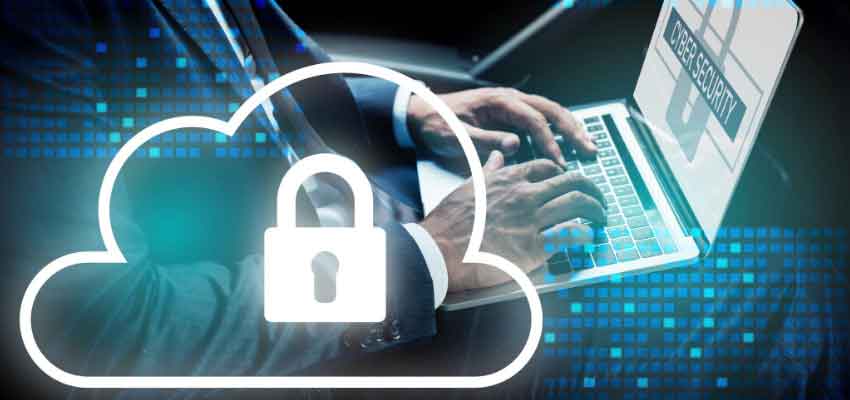Show:
Cyber Security as the Game Changer in B2B Digitization
As a result of digitalization and the Internet of things, service providers now have access to vast amounts of consumer data. Data privacy and security legislation should hence be enforced appropriately.
When using an app nowadays, we provide nearly all of our personal information and services, giving them access to all our data, including our location, contacts, and camera.

Here is where governments are needed to play a critical role in ensuring that the company’s customer data is secure and authentically stored and that the customer feels comfortable giving it.
To keep internet browsing safe means that everything possible should be done by a state administration’s formulation and enforcement of data privacy legislation. In today’s world, data protection is more than just a petition mechanism; governments are now developing their own data rules.
The EU, like the United States, has policies. California is the first state to enact data protection legislation. India has also established its own set of data policies, which has yet to be enacted into law.
Cyber security threats in B2B digitization
In India, for example, businesses are quickly adapting to the Internet’s fast pace, but they are weak in cyber security. The enormous scope and preferred differences open them up for cyber threats and render Indian customers a target.
As a result, businesses must establish a cyber-security strategy like they plan for business operations and customer satisfaction. The emphasis ought not to be on making end goods user-friendly but also on ensuring data security and developing trusting relationships with clients.
Phishing
Cybercriminals will constantly track users and conduct attacks that take advantage of their existing routines and patterns.
Business email compromise attacks are usually about attackers enticing consumers to disclose usernames, passwords, and other credentials unknowingly. Attackers react with definitive top-level domains or email attachments carrying malicious code as consumers search for information about lockdowns, immunizations, and stimulus eligibility on official documents.

Domain
Another website hosting, not just Word Press, has issues as well. In recent years, attacks like XSS, SQL injection, and DDoS have gained prominence, using domain-level security weaknesses. If you share your website with independent freelancers or consultants, it becomes considerably more perilous.
Use of social media
Marketers today are well aware of the potential of social media and how to leverage it to their advantage. Nonetheless, there is a cost to having such immense power. Attackers steal online accounts since they may do more harm than merely steal personal information by hijacking accounts and using them to broadcast inappropriate content until you pay them to stop. Several members of your team may even use the same social networking platform.
Information leaking
While cyber business security may appear complicated, it is critical to remember that security nowadays goes far beyond the office. Smartphones and tablets are becoming increasingly popular. Portable storage devices are a valuable tool for data backup and transit because of their widespread availability and low cost.
Because of these characteristics, they are also a target for data thieves. The following recommendations will help the management take the first actions to prevent data from leaking out of the company;
- Use passcode locks on mobile devices.
- Enable GPS tracking and the option to wipe the device if it goes missing remotely.
- When using portable storage devices, encryption software is highly advised.
- Keep a close eye on your phone.
Theft of Customer Information
Customers’ data is targeted by hackers, who steal personal information like payment card numbers and sell it on the black market. For more complex assaults, stolen credentials are used. Similarly, attackers can access digital networks and physical locations via login credentials. For the past decade, the number of expensive class-action lawsuits over stolen consumer data has been on the upfront.
Theft of Corporate Data
Corporate data theft, especially for huge B2Bs, may go unnoticed by the media. Nevertheless, it is as devastating as consumer data theft. This threat can however be tackled by engaging with Soc 2 audit firms which ensure that Connected technologies, including; control systems, industrial Internet of things, and automation, are not used by manufacturers and decreases the danger of copyright data.
Hacking
Criminals can still make a killing by gaining access to an organisation’s IT systems from the outside. They’ve tried to get entry to bank details or credit card databases. On the other hand, intellectual property is a valuable asset—using social engineering to persuade employees to give login details.
Network firewalls and data security systems are all at risk of being hacked. Rivals and state-sponsored actors hack into a company’s proprietary designs and procedures to damage its competitive advantage, disrupt operations, and destroy supply networks. B2-B brands must confront the reality of rising cyber-attacks.
Internal Players
Insider threats and rogue employees rank after external hackers and criminal organisations. Managers, admins, other authorised business users, third parties, and temporary workers are the most harmful categories of insiders, according to Cyber Security Insiders. They use their position to spread spyware, reveal secret information, leak client records for financial gain, and harm the firm.

How to manage these cyber threats
Identifying Potential Attack Vectors
Data security is similar to physical security because it requires awareness and prompt action to succeed. Understanding the attack vectors will aid corporate executives in better monitoring and defence.
Checking for Vulnerabilities in the System
Verizon showed the substantial discrepancies amongst B2C and B2B digitization vulnerabilities in its 2020 report. While 99 percent of retail spyware target’s customer data, data theft accounts for up to 29% of B2B breaches.
A record number of remote workers puts pressure on infrastructure and exposes VPN vulnerabilities. Bad actors know this and exploit these flaws to access weakly protected computers and install spyware or other third-party programs. Checking for these is hard, but it is excellent to link data to specific departments and assign administrators for accountability purposes.
With Identity Governance and Administration (IGA), security administrators can effectively manage user identities and access across the enterprise. This enhances their ability to monitor identities and access privileges, and assists them in enforcing necessary controls to prevent inappropriate or hazardous access.
Scrutinising Errors in Deployment
Applications are used by e-commerce enterprises in a variety of ways. Each phase of the software development lifecycle must be evaluated for application-level vulnerabilities. Traditional security measures such as dynamic and static application security testing are no longer helpful for remote developers.
Conclusion
Digitization of business has brought various challenges to the industry, and B2B is no different. The good thing is that measures can be put in place to curb this problem. It is a plus for any organisation to have a data security plan for daily transactions and future transactions

 Return to Previous Page
Return to Previous Page








